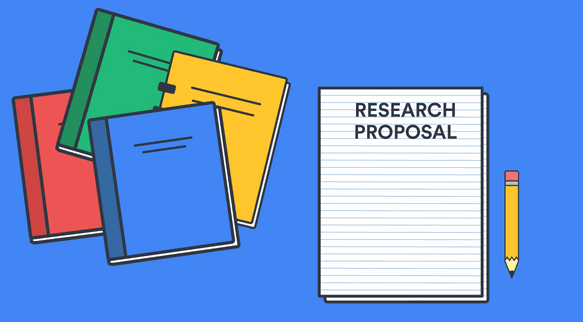Securing funding for your research is a critical step in advancing your career and making a meaningful contribution to your field. A well-crafted research proposal serves as your roadmap, outlining the journey your research will take and convincing potential funders of its value and feasibility.
This guide will walk you through the essential components of a winning research proposal, empowering you to articulate your research vision and secure the necessary resources for its success.
1. Defining the Research Problem: Laying the Foundation for Impact
Every research proposal begins with a clear and compelling articulation of the research problem. This is not simply stating a topic; it’s about identifying a gap in knowledge, a pressing issue, or an unresolved question that your research aims to address.
- Start with a strong hook: Grab the reader’s attention by highlighting the significance of your research problem. Why should anyone care about your project? What are the potential real-world implications of your findings?
- Provide context: Briefly describe the existing body of research related to your problem. What are the key findings and limitations of previous studies? How does your research build upon or extend this existing knowledge?
- State your research question(s): Clearly define the specific questions your research will aim to answer. These questions should be focused, measurable, and relevant to the overall research problem.
2. Literature Review: Building a Strong Foundation for Your Research
A robust literature review demonstrates your understanding of the research landscape surrounding your topic and reinforces the importance of your research question. It also helps you avoid duplication of existing work and identify potential methodological approaches.
- Comprehensive and relevant: Include a wide range of sources, including peer-reviewed articles, books, and relevant reports. Ensure your sources are current and directly related to your research problem.
- Critical analysis: Don’t simply summarize existing research. Analyze the strengths and weaknesses of previous studies, identify potential gaps, and explain how your research will address these limitations.
- Synthesize and connect: Summarize key findings and synthesize them to create a coherent narrative that ultimately leads to your research question.
3. Methodology: The Blueprint for Your Research Journey
The methodology section is the core of your research proposal, outlining the specific steps you will take to answer your research question. It should be detailed, feasible, and rigorous.
- Research design: Clearly state the overall research design, whether it’s quantitative, qualitative, or mixed-methods. Explain your chosen approach and why it is the most appropriate for answering your research question.
- Data collection methods: Describe the specific methods you will use to collect data, such as surveys, interviews, experiments, or archival research. Provide details on the instruments, procedures, and sampling techniques.
- Data analysis plan: Outline the procedures you will use to analyze your data, including statistical methods, coding schemes, or qualitative analysis techniques.
- Ethical considerations: Address any potential ethical issues related to your research, including informed consent, privacy, and data security.
4. Timeline and Budget: Mapping Your Research Journey
A detailed timeline and budget demonstrate your commitment to completing your research project within a reasonable timeframe and with the necessary resources.
- Realistic timeline: Break down your project into manageable tasks and estimate the time required for each phase. Be mindful of potential delays and build in some buffer time.
- Detailed budget: Itemize all expenses, including personnel, equipment, supplies, travel, and data analysis. Justify each expense and explain its necessity for your research.
- Clarity and transparency: Present your budget clearly and transparently, ensuring all expenses are categorized and explained.
5. Expected Outcomes and Significance: Articulating Your Research’s Impact
The final section of your research proposal should clearly articulate the expected outcomes of your research and explain its broader significance.
- Specific and measurable outcomes: Detail the specific findings you expect to achieve through your research, and describe how these findings will contribute to the existing body of knowledge.
- Potential applications: Outline the potential applications of your research, both within your field and in broader society. How could your findings be used to solve real-world problems or inform policy decisions?
- Wider impact: Explain how your research will advance your field, contribute to social progress, or influence future research directions.
6. Writing Style and Presentation: Making a Lasting Impression
Finally, remember that the writing style and presentation of your research proposal are just as important as its content.
- Clear and concise: Use precise language and avoid jargon. Write in a straightforward and compelling style that is easy to understand.
- Concise and focused: Avoid unnecessary details and stick to the essential points. Organize your ideas logically and maintain a consistent flow throughout the proposal.
- Proofread carefully: Thorough proofreading is essential. Ensure your proposal is free of grammatical and spelling errors, and that all sources are properly cited.
7. Additional Tips for Success
- Target your audience: Tailor your research proposal to the specific requirements of the funding agency or organization.
- Get feedback: Share your draft with colleagues, mentors, and peers. Seek their feedback on the clarity, rigor, and overall persuasiveness of your proposal.
- Practice your pitch: Be prepared to give a brief, compelling overview of your research proposal. This will help you refine your key messages and ensure you can effectively communicate the importance of your project.
The Bottom Line
Crafting a winning research proposal requires careful planning, clear communication, and a deep understanding of your research topic. By following these steps, you can increase your chances of securing the funding you need to conduct impactful research and make a lasting contribution to your field. Remember, a strong research proposal is more than just a document; it’s a compelling argument for your research’s value and a roadmap to achieving your research goals.







